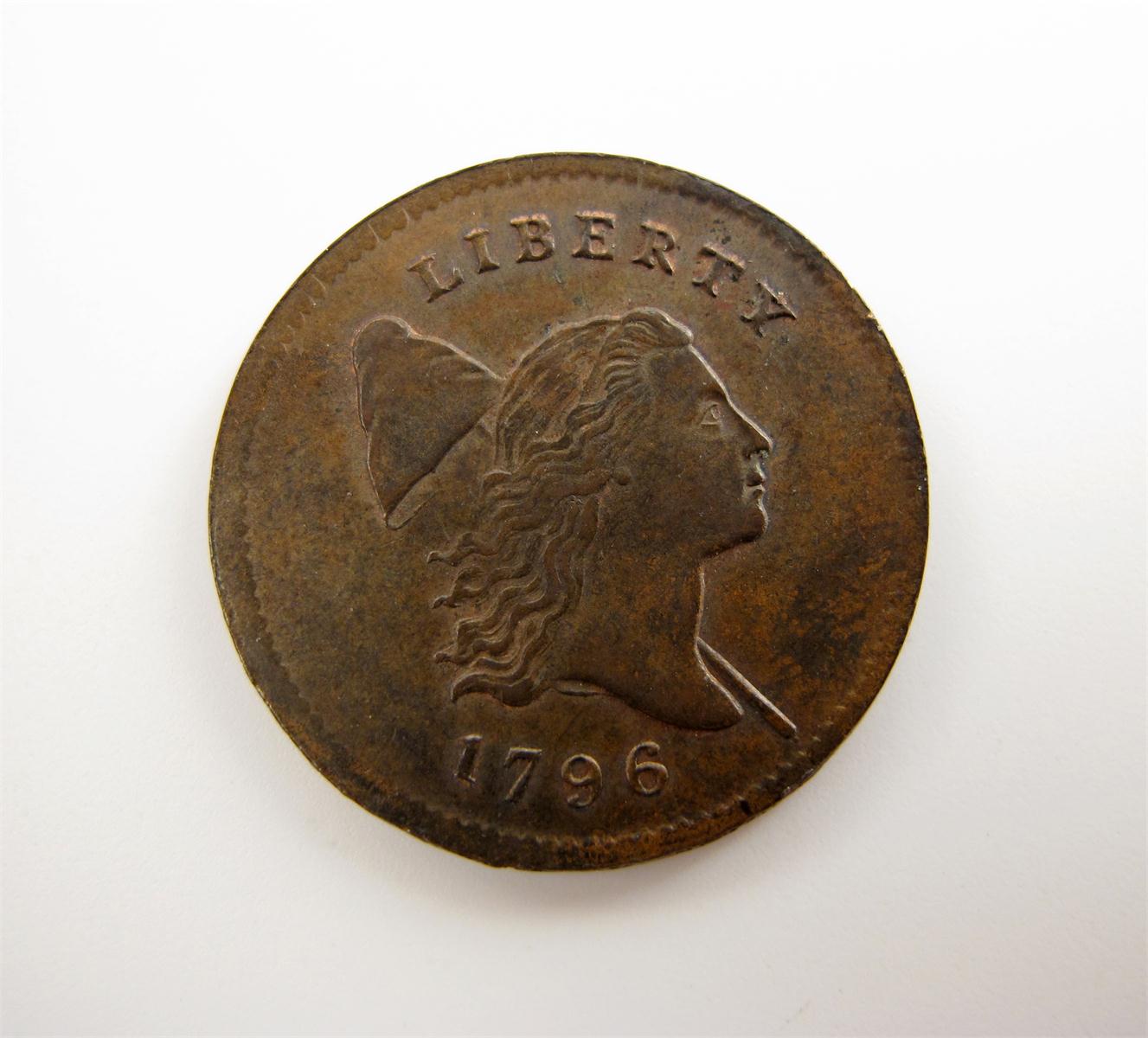Silver & Collectors' Items - Day 1 and Day 2 - 22nd January 2013
Lot 579
Please note: We will not have live internet bidding on this lot. To bid
Estimate £25,000 - £30,000 | Hammer £185000
+ Buyers Premium
Description

Please note: We will not have live internet bidding on this lot. To bid, please conact the department.
United States of America, Half-Cent, 1796, Liberty head to right with long flowing hair, behind her a pole on which rests a Phrygian or Liberty cap, LIBERTY above, 1796 below, rev. value HALF CENT within an open wreath of olive the stems tied with a ribbon and below 1/200, UNITED STATES OF AMERICA around, beaded border to both sides, plain edge, 5.49gms (Cohen 2*). Extremely fine and, with a mintage of only 1390 specimens, a coin of exceptional rarity.
The coin is very much in its original condition with a good even brown colour and some traces of redness around the obverse letters and around wreath on the reverse. The beaded border is weak on the left and right sides of the obverse and on the left of the reverse. Whilst the cap shows a little flatness in striking the fold lines are unusually clear. There is a similar slight flatness to the hair. The coin is one of just a handful that have survived in this condition.
The coin was struck in pure copper at the Philadelphia Mint and whilst the design of the first series of Half-Cents has been attributed to the Mint's first Chief Engraver, Robert Scott, it is widely accepted that all the work was carried out by John Smith Gardner, Assistant Engraver from 1794 to 1796, who was paid between
1.62 - 2.62 dollars per day. The figure rose to 3.00 dollars per day shortly before Gardner left the Mint's employment in August, 1796.
On the initial 1796 obverse die the Cap hovered behind the head without a pole, but the die broke before striking many coins and the "with pole" replacement was introduced. In 1796 the Philadelphia Mint was busy producing the first gold coinage of Five and Ten Dollar pieces and the Half-Cent didn't receive much attention. It has always been a rarity in the collectors' market. Q. David Bowers has recently written that most of the better specimens have surfaced in British collections. The 1790's was a time when copper coinage and copper trade tokens were widely collected in Britain and it was the natural place for coins of the former colony to end up - after all there was no local collecting market in America at that time.
The coin has no early pedigree but was collected by Mark Hillary, when a schoolboy, some 55 years ago or more. Mark Hillary was a brilliant classical scholar who achieved much before his untimely death in a climbing accident in Greece at the age of 20 in 1963. He won scholarships to Winchester College and Magdalen College, Oxford; achieved a First in Classical Mods and was on the way to achieving a First in Greats when he died. Much of his spare time was spent at Spink's and Seaby's in London pursuing his hobby of coin collecting and the main part of his collection was sold at Woolley and Wallis a few years ago. The lesser coins that must have formed his original schoolboy collection, were housed in home-made cardboard trays and a 'cabinet' made of matchboxes, which only came to light recently during a clear out of boxes of what was thought to be junk
They (and the matchbox cabinet) are offered elsewhere in the sale (lot 556). Woolley & Wallis are delighted to bring this discovery to the market.
* Cohen, Roger S., AMERICAN HALF CENTS: "THE LITTLE HALF SISTERS", Bethesda, 1971; and 2nd Edition, 1982